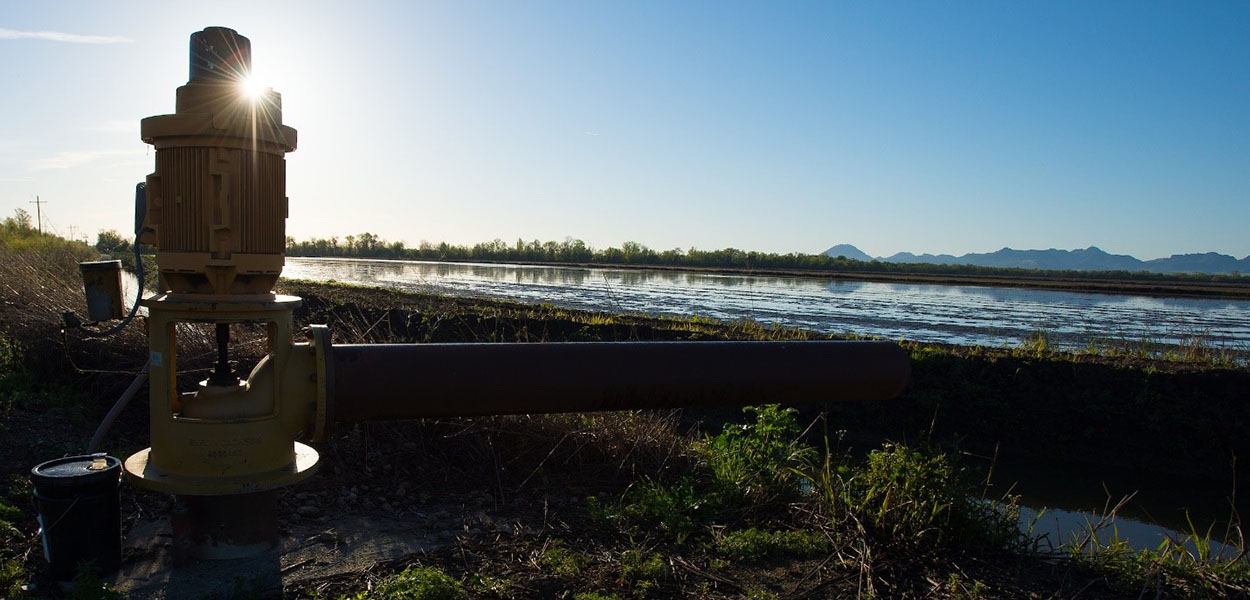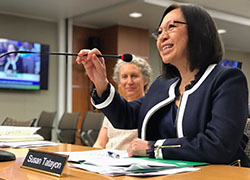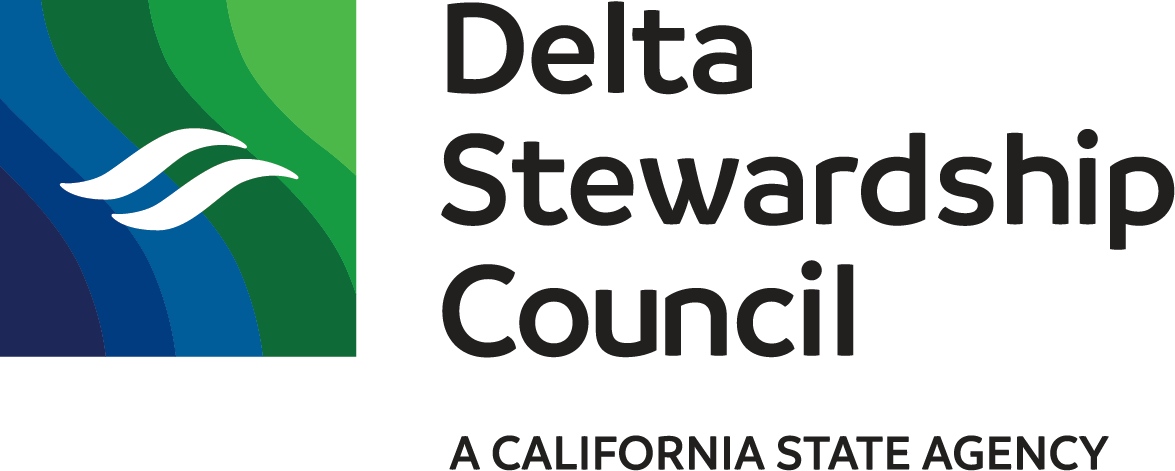
Groundwater level measurements taken at wells like the one pictured above in Colusa County are helping resource managers develop a statewide database for current groundwater levels and other hydrologic data. Photo: Kelly Grow/California Department of Water Resources
What Does Groundwater Have to Do with the Delta? A Lot.
July 25, 2019
By Susan Tatayon
California has a vast water supply not just in its lakes, rivers, and estuaries, but also underground. For years, California’s cities and farms have depended on this unseen resource, especially in the southern part of the state where rainfall is low, surface water is scarce, and demand is high. In fact, underground aquifers provide about 40 percent of California’s water supply in a normal year and significantly more in dry years.
Groundwater is also something that, until recently, was largely absent from the state’s water management oversight; this changed in 2014 with the passage of the Sustainable Groundwater Management Act (SGMA). For the first time in its history, California established minimum standards for sustainable groundwater management. If local resource managers fail to meet these standards, this legislation authorizes the state to intervene to protect groundwater basins. SGMA is an earth-shaking move toward managing California’s groundwater and surface water as an interconnected system.
This month has seen a flurry of SGMA-related activity. Following an extensive, two-year technical review, the Department of Water Resources (DWR) made its first SGMA determination, approving nine alternatives to groundwater sustainability plans (GSPs) and disapproving six plans. This initial determination is an important first test of SGMA and sets the bar for future GSPs and alternative plans ahead of a Jan. 31, 2020 deadline for Groundwater Sustainability Agencies (GSAs) to submit their plans.
SGMA and the Delta Plan
While it may not be obvious to some, sustainable groundwater management is inherently connected to the long-term survival of the Delta. Not only does the state’s most significant groundwater use occur in regions that also rely upon water from the Delta watershed, reduced reliance on the Delta and improved regional self-reliance are central to many of the goals outlined in the Delta Stewardship Council’s Delta Plan.
Through its updated prioritization of California’s 515 groundwater basins (Bulletin 118) to inform SGMA, DWR has already fulfilled one of three Delta Plan recommendations focused on regional water reliance and reduced reliance. Two additional Delta Plan recommendations - implement groundwater management plans in areas that receive water from the Delta watershed and recover and manage critically overdrafted groundwater basins - align closely with SGMA’s mandates.
Recovering critically-overdrafted basins, or basins where continued water management practices would likely result in significant adverse overdraft-related environmental, social, or economic impacts, will be one of the greatest long-term challenges of sustainable groundwater management. However, this recovery is essential to avoid the “undesirable results” of groundwater overdraft identified in SGMA: chronic lowering of groundwater levels, reduced groundwater storage capacity, water quality degradation, depletions in interconnected surface water, land subsidence, and seawater intrusion in coastal basins.
Groundwater overdraft and associated groundwater pumping affect the quantity and quality of water available for groundwater dependent ecosystems, including riverine ecosystems and wetlands in the Central Valley and estuaries in the Delta and along the coast. These ecosystems offer valuable functions including shoreline protection, flood risk reduction, water filtration, groundwater recharge, and habitat for wildlife.
Furthermore, even though groundwater levels have recovered since California’s 2012-16 drought, many of the effects of groundwater overdraft are long-lasting and in some cases, permanent. Subsidence from groundwater overdraft has damaged critical water conveyance and flood protection infrastructure throughout the state including the Delta-Mendota Canal, the California Aqueduct, the Eastside Bypass, and the Friant-Kern Canal. Perhaps the most dramatic example of this damage is the reduction of the Friant-Kern Canal’s conveyance capacity in the southern Central Valley by 60 percent due to subsidence.
Balancing Regional Self-Reliance and Reduced Reliance on the Delta
When surface water levels return to or exceed normal hydrologic conditions, the temptation is to divert more surface water to replenish groundwater aquifers. Due to the interconnected nature of the Delta with our state’s water supply, water managers must balance groundwater replenishment and additional diversions during high-flow years with the state’s policy to reduce reliance on the Delta and to meet California’s future water supply needs. This is especially critical in light of climate change forecasts, which will further strain the state’s water supply and ecosystems.
The work ahead for GSAs as they continue to prepare and finalize GSPs is tremendous, and implementation of these plans will take time, creativity, and courageous effort. But the gains will be worth it. Over the next 20 years, we’ll have valuable opportunities to learn more about how our water storage systems can work together to create a more sustainable, resilient statewide water supply and to reduce reliance on the Delta.

About the Author
Susan Tatayon is Chair of the Delta Stewardship Council and has more than 30 years of experience in water resources policy, planning, and management. Her monthly blog shares updates about the direction of the Council, progress toward implementing the Delta Plan, and achieving the coequal goals of water supply reliability and restoring the Delta’s ecosystem.

